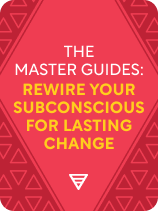

This article is an excerpt from the Shortform book guide to "The Master Guides: Rewire Your Subconscious for Lasting Change" by Shortform. Shortform has the world's best summaries and analyses of books you should be reading.
Like this article? Sign up for a free trial here.
What’s your conscious mind designed to do? What problems come as a result? Why and how should you tap into your subconscious mind?
It’s possible to rewire your subconscious mind to create lasting change. You can align your subconscious mind with positive habits by tuning into it via relaxation.
Keep reading to learn how to tap into your subconscious mind through relaxation techniques.
Tapping Into Your Subconscious Mind
We’ll look at advice on how to tap into your subconscious mind from Maxwell Maltz, Joseph Murphy, Joe Dispenza, and Bruce Lipton.
When your mind is relaxed, it’s more receptive to affirmations and visualizations. According to Maxwell Maltz (Psycho-Cybernetics), practicing physical relaxation will enable you to consciously control your imagination and, subsequently, your subconscious mind. He explains that, when your mind is alert, your negative thoughts create tension in the body that makes it difficult for your subconscious mind to accept new ideas or possibilities. On the other hand, when you’re in a state of relaxation, negative thoughts tend to disappear and your positive suggestions have space to thrive.
Joseph Murphy (The Power of Your Subconscious Mind) adds insight into why Maltz equates being alert with having negative thoughts: When you’re awake and alert, you can’t help but think about and judge everything around you—this is what your conscious mind is designed to do.
This creates problems when you’re trying to tap into and retrain your subconscious mind because you can’t change your habitual conscious thoughts and beliefs instantaneously; your mind needs time to get used to your new way of thinking. During this time, your conscious mind questions and contradicts the beliefs you want to change. This conflict between what you want to believe and what you do believe confuses your subconscious mind because it’s not receiving clear instructions.
For example, you want your subconscious to believe that you’re energetic, but your conscious mind knows that you’re not. Each time you imagine yourself as energetic, you have counterproductive thoughts such as, “That’s not true because I’m always tired.”
When you practice relaxation, Murphy suggests, you lull your conscious mind to sleep and have direct access to your subconscious mind without interference. Since your subconscious mind is more receptive to your thoughts when your conscious mind is relaxed, Murphy recommends that you regularly ponder how you want to think and behave before you go to sleep.
Practice Meditation
Self-help speaker Joe Dispenza (Becoming Supernatural) offers a different take on how relaxation helps reprogram your subconscious mind: According to him, it helps your brain drop into lower-frequency brainwave states, such as theta or delta waves. This puts you into a trance-like state that makes your subconscious mind more susceptible to messaging. He suggests that you can use meditative practices to train your brain to drop into these lower-frequency states.
Explore Energy Psychology Techniques
Like Dispenza, developmental biologist Bruce Lipton (The Biology of Belief) emphasizes that the only way to effectively train your subconscious mind is to drop into lower-frequency brainwaves. In addition to practicing meditation, he recommends that you explore “energy psychology” techniques such as hypnosis, neuro-linguistic programming (NLP), or kinesiology (the study of body movement). These methods help lower your brainwave frequency before using implicit messaging (sometimes called “subliminal” messaging) to reach your subconscious and overwrite the existing automatic routines.

———End of Preview———
Like what you just read? Read the rest of the world's best book summary and analysis of Shortform's "The Master Guides: Rewire Your Subconscious for Lasting Change" at Shortform.
Here's what you'll find in our full The Master Guides: Rewire Your Subconscious for Lasting Change summary:
- Why the only way to change a bad habit is to rewire your subconscious
- Methods from experts such as Tony Robbins, Charles Duhigg, and Nicole LePera
- Why it's so important to take time for physical relaxation






